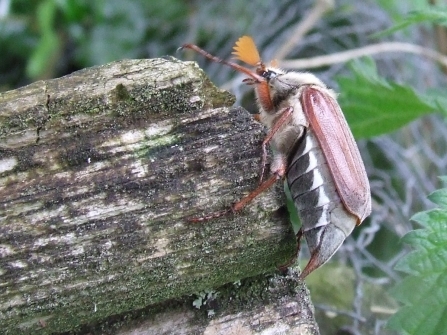Note for beginner nature watchers: People are handling the creatures in some of the photos. Although touching wildlife improves our knowledge of – and closeness to – the natural world, it is all too easy to harm wildlife (and occasionally ourselves). If and when you come into physical contact with wildlife, be well-informed, alert, careful and respectful. Cause neither damage nor displacement.
Elephant hawkmoth – caterpillar and moth (Deilephila elpenor)
I have been asked more ID questions about this than any other garden creature. It has occasionally been mistaken for a very small snake or lizard. It looks a little like a mini elephant’s trunk and seems to have large eyes (the real head is inconspicuous).
This charismatic caterpillar is found on willowherbs and on fuchsias in gardens, although it also feasts on the abundant bog bean leaves above the surface of our pond. If anyone is thinking of getting rid of this caterpillar to protect their fuchsias, they should realise that it soon becomes a vividly spectacular and exotic-looking moth that will brighten up their day and their garden. I found a dull, anonymous-looking pupa on the pavement one rainy morning and brought it into the greenhouse, where it hatched into this bright pink beauty.


